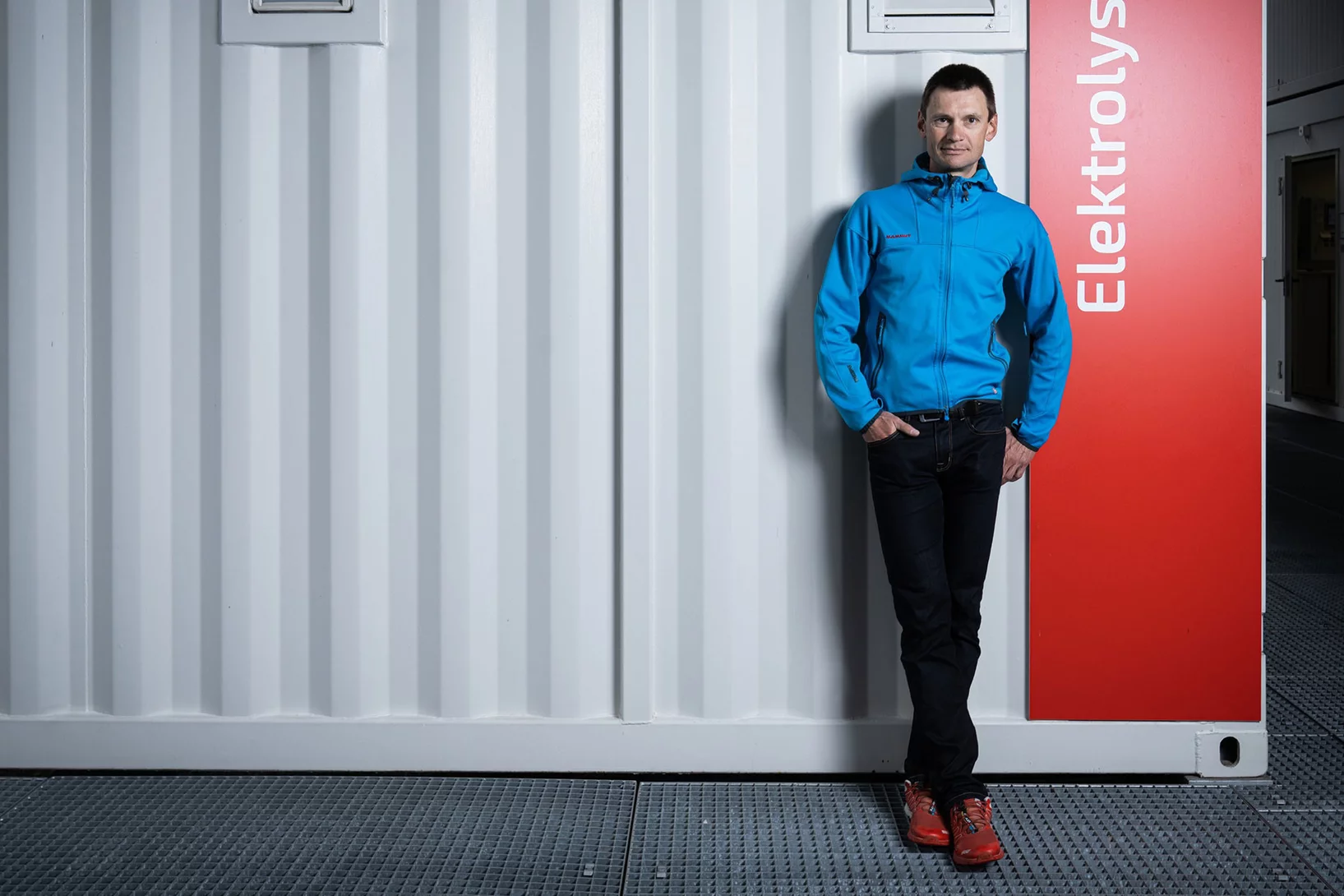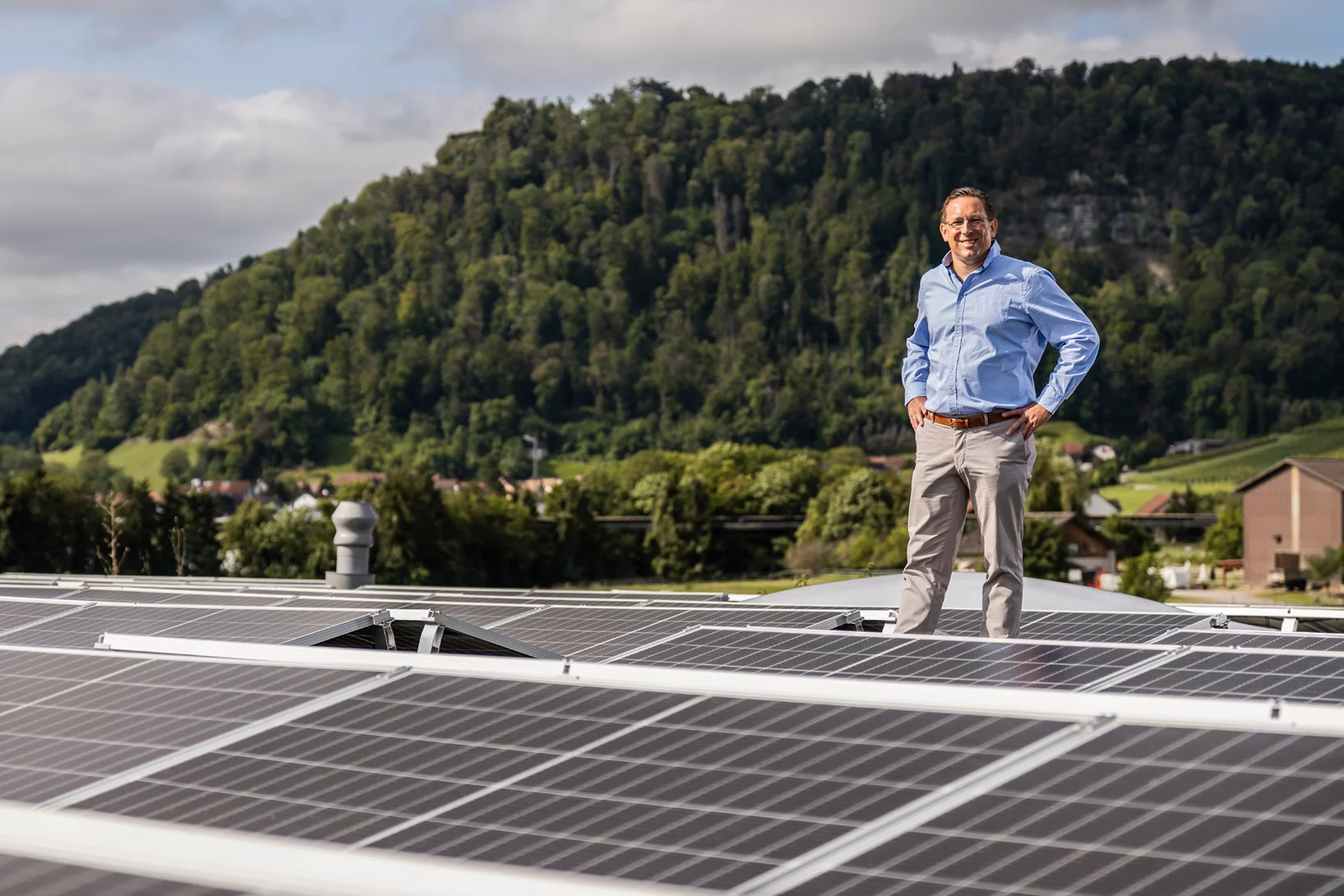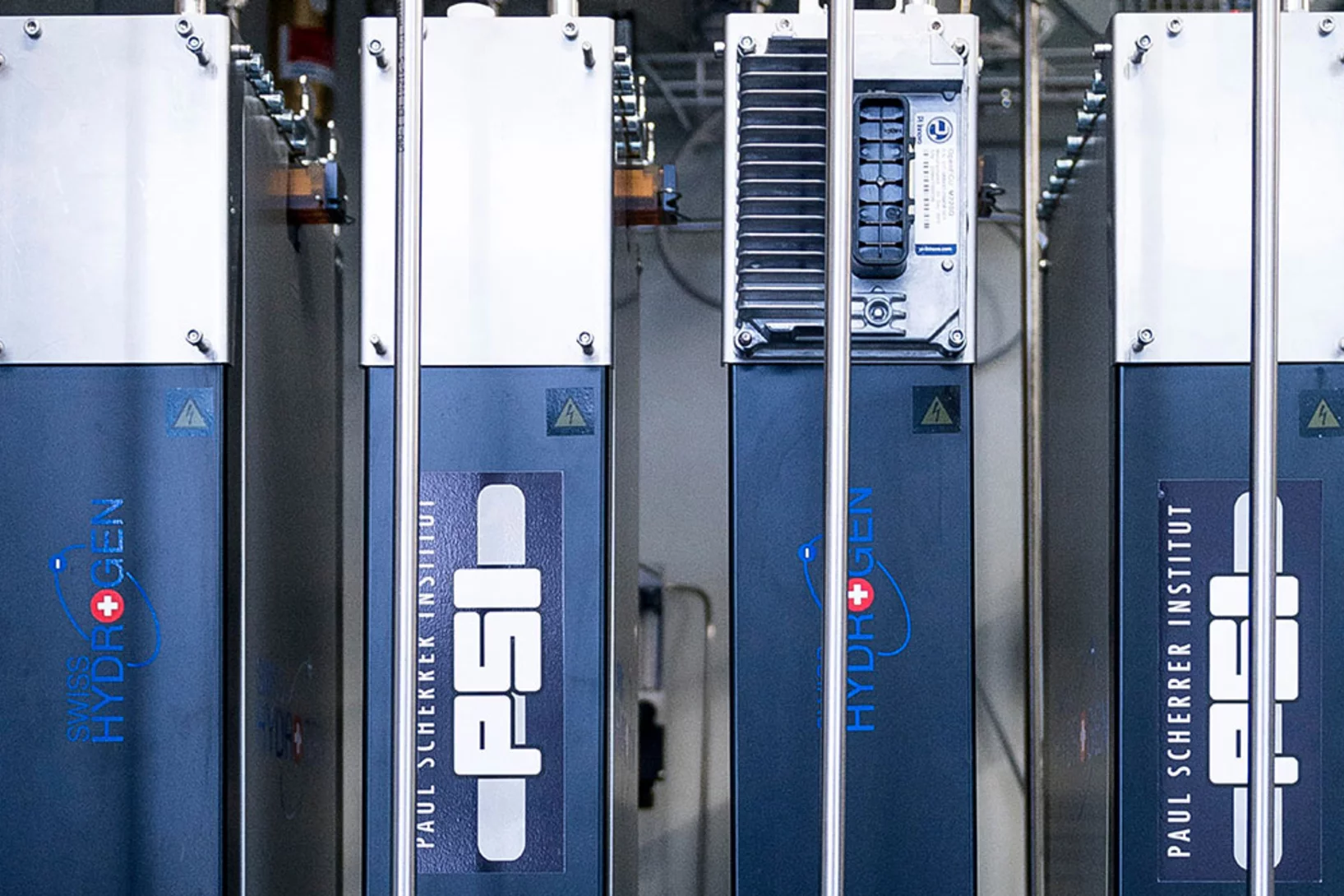As from 2050, photovoltaic systems could generate up to 46 terawatt hours of electricity a year. Compare this with the 25 terawatt hours produced by nuclear power stations in 2019. However, photovoltaic output is subject to strong seasonal fluctuations. For electrical power to be available in winter as well, it must be stored in summer – and hydrogen could be a solution for this.
Storing electricity in the form of hydrogen during peak production in summer and feeding it back into the grid when it is needed – the ESI platform at PSI is developing the necessary components for producing, storing and converting hydrogen, and testing their efficiency with the help of simulations. © Paul Scherrer Institute PSI/Benjamin A. Senn, Markus Fischer, Mahir Dzambegovic
Many single-family homes with photovoltaic systems currently use lithium batteries to store the electricity produced during the day for night-time use. Such batteries have high efficiencies – about 85 percent of the stored electricity can be recovered. However, the materials are very costly, which makes them unsuitable for long-term storage. While hydrogen is less efficient, currently allowing around 50 percent of energy to be recovered, it can be produced cheaply in large quantities. Large production plants could convert electricity sourced from renewables into green hydrogen during peak periods of low demand and store this for the winter.
Hydrogen is produced by the electrolysis of water, whereby electrical current is used to break down water into its components hydrogen and oxygen. The electrical energy is now stored in the hydrogen as chemical energy. So-called fuel cells can reverse this electrochemical process, when required, converting the hydrogen back into electricity with the help of oxygen from the air. The only by-products are heat and water.
Perfecting the process
The principle sounds simple, but it requires a lot of scientific and engineering know-how, because energy is lost both during electrolysis and during conversion in the fuel cell. In order to achieve the highest possible efficiency, intensive research and experimentation is being carried out at PSI and in particular on the experimental platform ESI, which stands for Energy System Integration.
In addition to efficiency, another challenge is storage. Hydrogen is a very light gas that takes up a large volume when stored. The ESI platform uses a tank for this purpose. The tank holds around 7 megawatt hours of hydrogen – when converted back into electricity, it can generate around 3.5 megawatt hours of energy, roughly equivalent to the annual consumption of a two-person single-family household. Deployed on a larger scale, however, such tanks would take up too much space. Natural salt caverns, such as those currently used in Germany for hydrogen storage, do not (yet) exist in Switzerland. Therefore, underground systems of pipes are also being examined as a means of storing hydrogen in a way that doesn’t take up too much space.
Currently, there is a limited supply of green hydrogen in Switzerland and that is mainly used for mobility. Cars and trucks can be refuelled with green hydrogen at twelve filling stations. However, as new renewable energies expand, hydrogen is expected to play a greater and greater role. The Laboratory for Energy System Analysis at PSI estimates that from 2050 onwards, up to 5 terawatt hours of energy will be available annually in the form of hydrogen. This could then be used both for mobility and for long-term energy storage. In the second episode of our Energy Future series, we explain how electricity can be stored in the form of hydrogen.
The video series Energy Future deals with everyday questions on the topic of Switzerland’s energy transition. Each short video focuses on one particular issue. Possible solutions are put forward taking the latest results of energy research at the Paul Scherrer Institute.
Hydrogen nomenclature
Hydrogen is given different names in the energy industry, depending on how it is produced. The common “colour code” is as follow:
- Green hydrogen: produced using electricity from renewable sources
- Turquoise hydrogen: produced by means of so-called methane pyrolysis, in which heat is used to split natural gas to produce hydrogen and solid carbon.
- Orange/yellow hydrogen: produced from organic materials such as biomass, biogas and biomethane.
- Pink hydrogen: produced using electricity from nuclear power sources
- Blue hydrogen: produced from natural gas when carbon dioxide is captured and stored in geological formations
- White hydrogen: naturally occurring hydrogen
- Grey hydrogen: produced from natural gas (grey is also often used to refer to all fossil fuels).
- Brown hydrogen: from lignite
- Black hydrogen: from anthracite (hard coal)
Contact
Dr. Felix Büchi
Head of Laboratory for Electrochemistry
Paul Scherrer Institute PSI
felix.buechi@psi.ch
[German, English]
Original publication
-
Panos E, Kannan R, Hirschberg S, Kober T
An assessment of energy system transformation pathways to achieve net-zero carbon dioxide emissions in Switzerland
Communications Earth & Environment. 2023; 4(1): 157 (18 pp.). https://doi.org/10.1038/s43247-023-00813-6
DORA PSI



